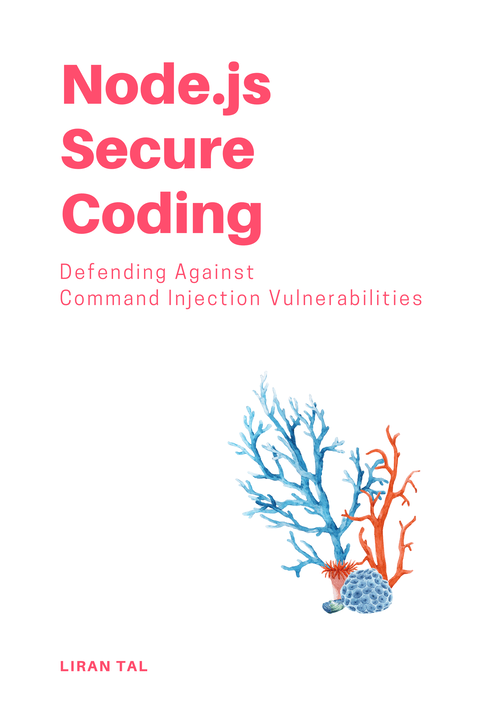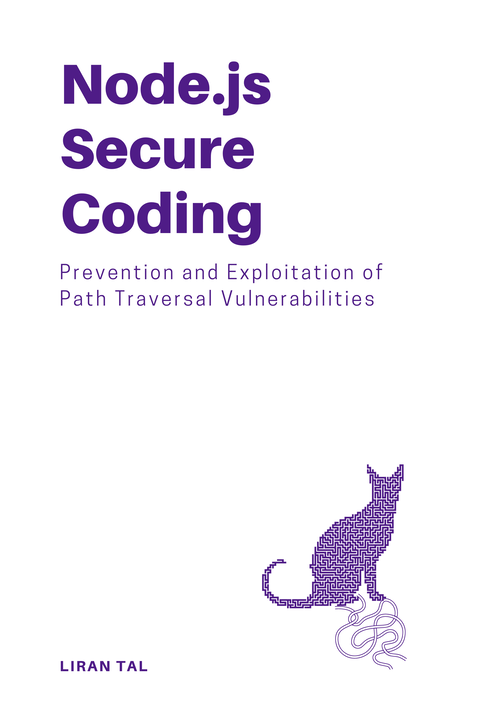~ 5 min read
An Introduction to Command Injection Vulnerabilities in Node.js and JavaScript

As developers, we strive for robust and secure applications. However, one common security vulnerability that often remains unnoticed is command injection. In this blog post, we will explore command injection vulnerabilities in the context of Node.js and JavaScript, shedding light on the risks they pose to server-side backend development and how to protect our Node.js applications against them.
Understanding Command Injection
Command injection is a type of vulnerability that occurs when untrusted user input is executed as a command by the operating system. In the case of Node.js and JavaScript, this vulnerability can arise when user-supplied input is directly concatenated into a command executed by the underlying operating system, hence it is a form of injection. Attackers exploit this vulnerability by injecting malicious commands that can lead to unauthorized access, data breaches, or even complete compromise of the system.
The Dangers of User Input Command Injection
To understand the severity of command injection vulnerabilities, let’s consider a common scenario. Imagine a web application that allows users to submit feedback. The application takes user input and executes a command to store the feedback results in a file. If the Node.js backend application does not properly validate and sanitize user input, an attacker can inject commands that go beyond the intended functionality, leading to disastrous consequences.
Consider the following vulnerable code snippet:
import { exec } from 'child_process';
const userFeedback = req.body.feedback;const command = `echo "${userFeedback}" >> feedback.txt`;
exec(command, (error, stdout, stderr) => { // Handle command execution results});Surely, this is only a rudimentary example but you’d be surprised at how many applications abstract the features and capabilities behind command execution.
In this example, the userFeedback variable is directly concatenated into the command string without proper validation. An attacker could exploit this vulnerability by submitting feedback that includes malicious commands, such as "; rm -rf /tmp/test.txt", resulting in the execution of unintended commands. The payload works by terminating the former command with ; and executing a new command to delete a file from disk.
👋 Just a quick break
I'm Liran Tal and I'm the author of the newest series of expert Node.js Secure Coding books. Check it out and level up your JavaScript
Real-World Examples and Implications
Command injection vulnerabilities have been the root cause of numerous security incidents in the past. One notable example is the infamous Shellshock vulnerability discovered in the Bash shell. It allowed attackers to execute arbitrary commands remotely, impacting countless systems worldwide. By referencing such incidents, we emphasize the importance and ubiquity of command injection vulnerabilities.
Mitigating Command Injection Vulnerabilities
To effectively mitigate command injection vulnerabilities in Node.js and JavaScript applications, it’s crucial to follow specific best practices. By implementing the following measures, you can significantly reduce the risk of exploitation. However, this isn’t an exhaustive list, but a reference:
1. Input Validation and Sanitization
One of the fundamental steps in preventing command injection attacks is to validate and sanitize all user-supplied input. Implement strict input validation routines to ensure only expected characters and patterns are accepted. Sanitize the input by removing or encoding (shell specific metacharacters) any potentially dangerous characters, such as semicolons, pipes, or quotes.
2. Separate Commands from Arguments
When interacting with an underlying operating system command execution, separate the command from its command-line arguments. This is a similar approach to SQL injection related vulnerabilities and countermeasures. Command and its arguments as parameterized queries separate the command execution from its command arguments or flags. This helps to reduce disk and prevent malicious input from being interpreted as part of the command.
3. Limited Command Execution
Too often, we might make the jump to use commands, because we’re so familiar and convenient with the CLI. For example, you might rush to use ImageMagick’s convert to apply image modifications to files uploaded to a Node.js backend server. Or, you might be tasked with a backend application that needs to clone Git repositories from GitHub and rush to use exec(‘git clone <repository-url>’).
Wherever possible, avoid executing user-supplied input as part of command execution. Instead, consider alternative methods or APIs that provide built-in security mechanisms, such as libraries that handle command execution securely or APIs that restrict command execution to specific predefined actions.
4. Principle of Least Privilege
The good old Unix security control has existed for decades. Why not follow it?
Follow the principle of least privilege when executing commands or interacting with external systems. Ensure that the executed commands have the minimal permissions and privileges required for the intended operation. Restrict access and avoid running commands with elevated privileges unless absolutely necessary.
Conclusion
Command injection vulnerabilities pose a significant threat to Node.js and JavaScript applications’ security. By understanding the risks involved, referencing real-world incidents, and following best practices, developers can effectively mitigate these vulnerabilities. Remember, validating and sanitizing user input, utilizing command argument separation, and following the least privilege principle are essential steps toward creating secure applications.
To deepen your knowledge and gain valuable insights into securing your Node.js applications against command injection vulnerabilities and other common security risks, I highly recommend checking out the book “Node.js Secure Coding: Defending Against Command Injection Vulnerabilities” by Liran Tal. This comprehensive resource provides practical examples, expert guidance, and in-depth explanations to help you sharpen your skills and develop robust, secure applications.
Visit nodejs-security.com to get your copy today and embark on a journey towards enhancing the security posture of your Node.js applications.
Stay vigilant, embrace secure coding practices, and together, we can fortify the integrity of our applications and protect sensitive data from the ever-present threats of command injection vulnerabilities.

